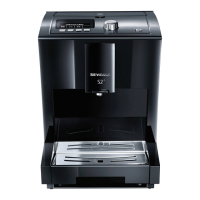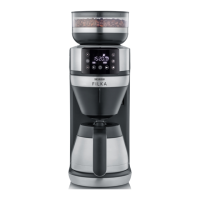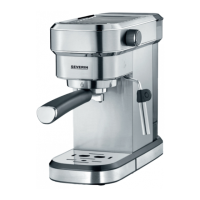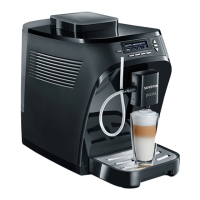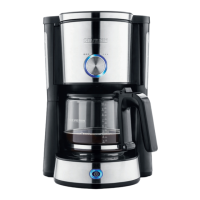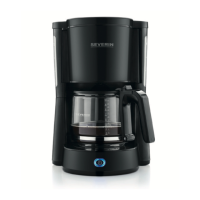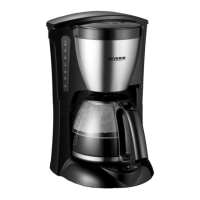Version 1 2011-04-18
26
US
11. Tips for perfect coffee enjoyment
Situation Tip
What kinds of coffee can I use? All types of coffee that are not treated
after roasting (e.g. with sugar).
My espresso/coffee does not have any
foam.
Use the right beans.
The coffee is old. Use fresh coffee
beans.
Set a ner grind
(‘7.1 Setting the grinding neness’ on
page 14).
Increase the quantity of coffee
(‘6.3.1 Preparing coffee or espresso’ on
page 10).
My espresso tastes bitter. Use a different type of coffee.
Reduce the quantity of coffee
(‘6.3.1 Preparing coffee or espresso’ on
page 10).
Set a coarser grind
(‘7.1 Setting the grinding neness’ on
page 14).
Set a lower brewing temperature
(‘7.2 Making individual settings for coffee
preparation’ on page 15).
My espresso tastes sour. Use a different type of coffee.
Reduce the quantity of coffee
(‘6.3.1 Preparing coffee or espresso’ on
page 10).
Put fresh water in the water tank.
Situation Tip
Set a higher brewing temperature
(‘7.2 Making individual settings for coffee
preparation’ on page 15).
My espresso tastes bland. Set a ner grind
(‘7.1 Setting the grinding neness’ on
page 14).
Increase the strength of the coffee
(‘6.3.1 Preparing coffee or espresso’ on
page 10).
The coffee ows very slowly out of the
coffee-milk dispenser.
Set a coarser grind (‘7.1 Setting the
grinding neness’ on page 14).
Clean the coffee-milk dispenser
(‘8.1 Daily cleaning’ on page 19).
The coffee used is too oily. Use a
different type of coffee.
Descale the device
(‘8.3.4 Descaling’ on page 21)
What type of milk is best for foaming? Types of milk with a high protein content.
The fat content does not matter.
The milk should be slightly cooled.
My milk does not foam. Clean the milk system (‘8.3.2 Cleaning
the milk unit’ on page 20).
When should I insert the water lter? With a water hardness > 10 °dH.
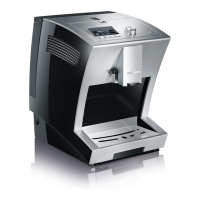
